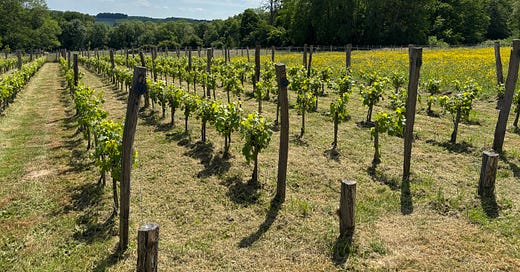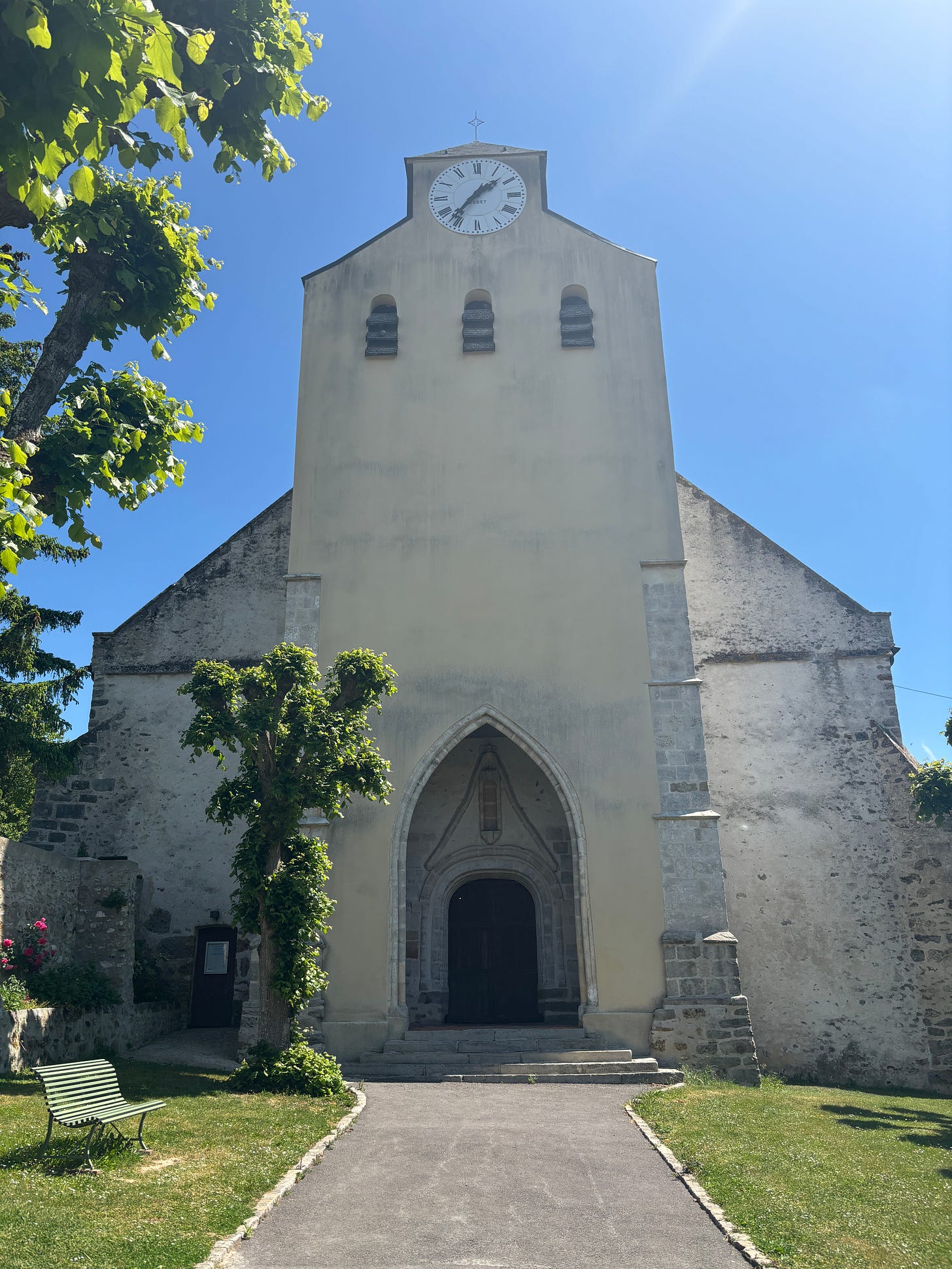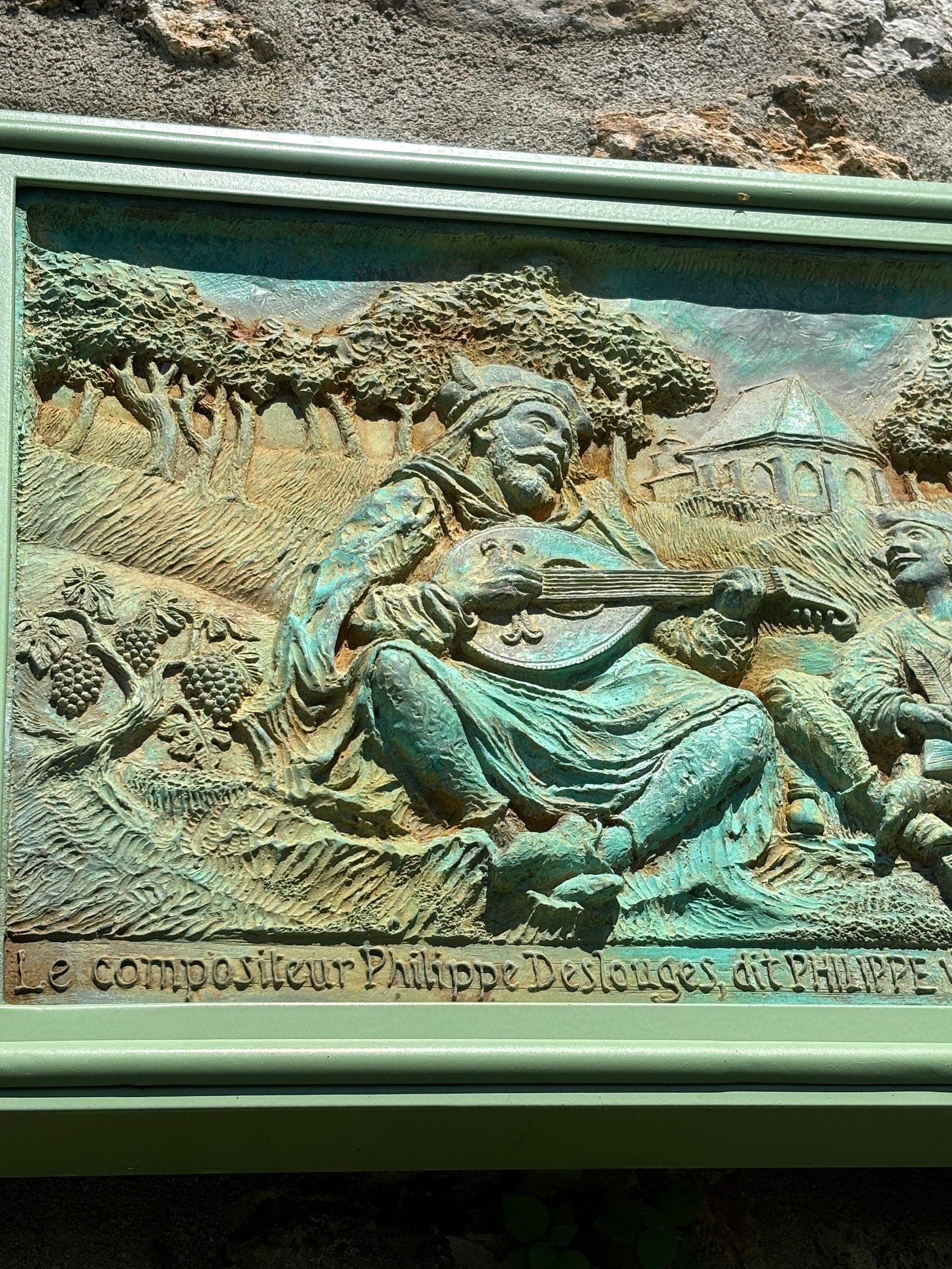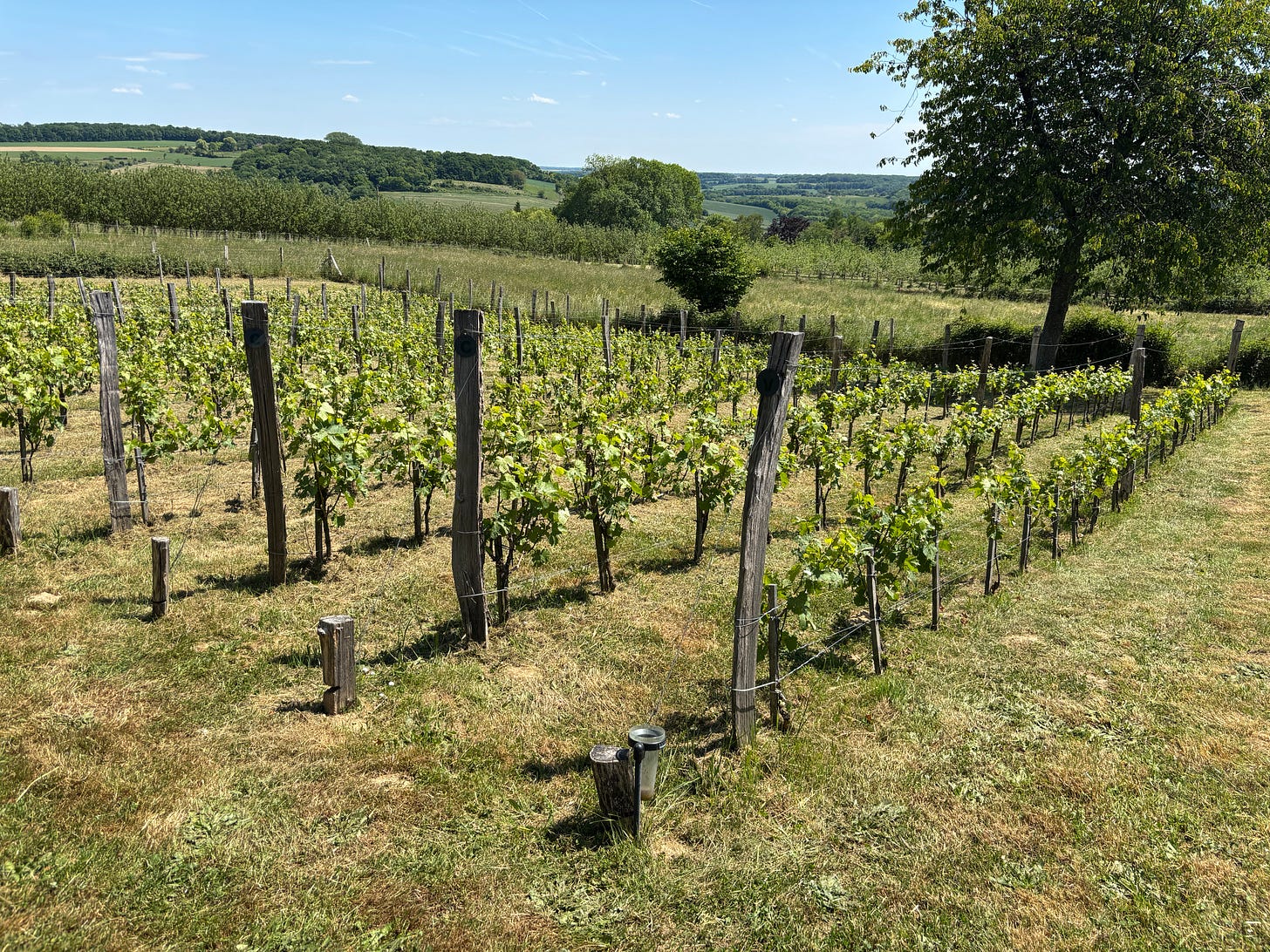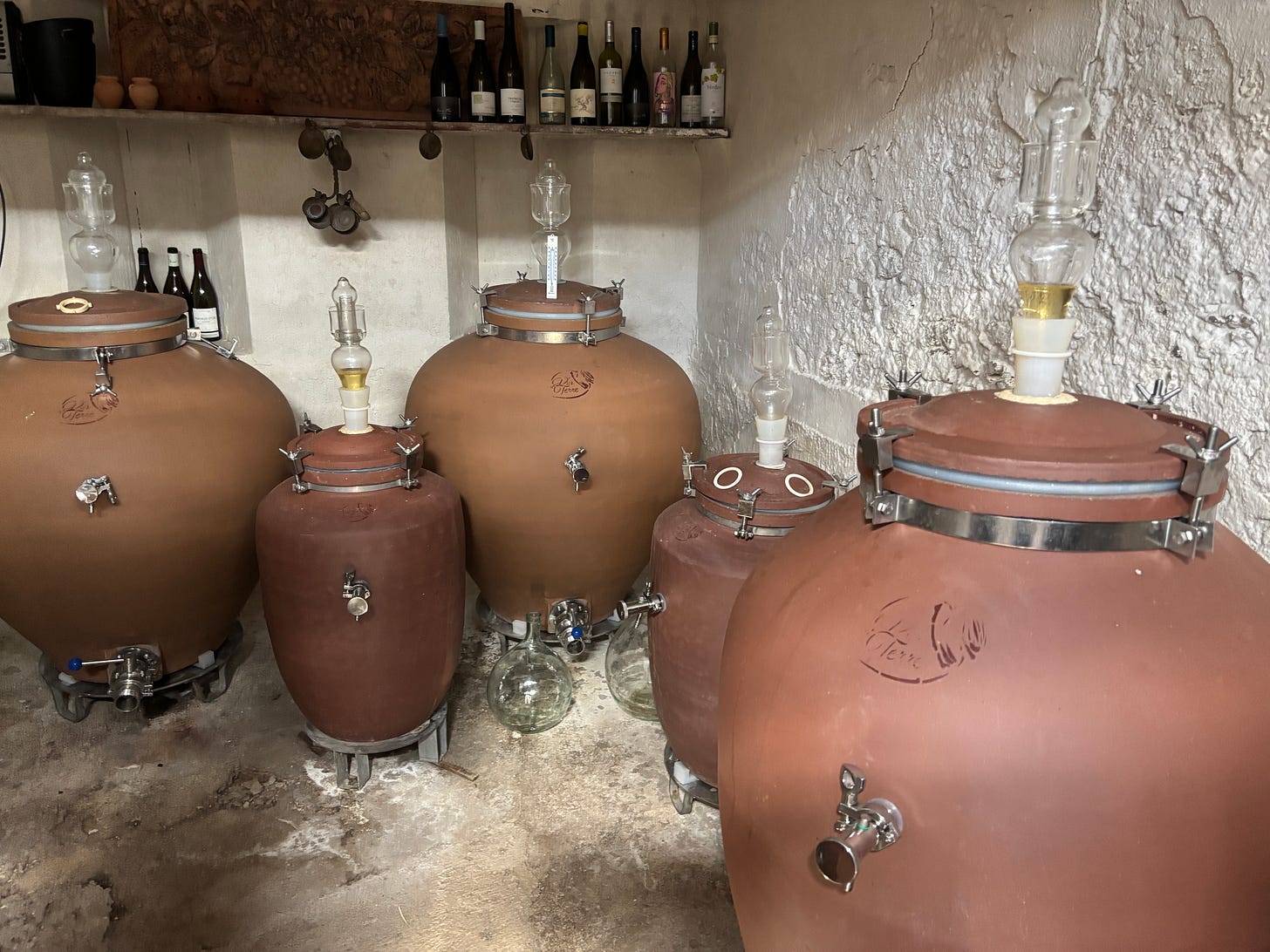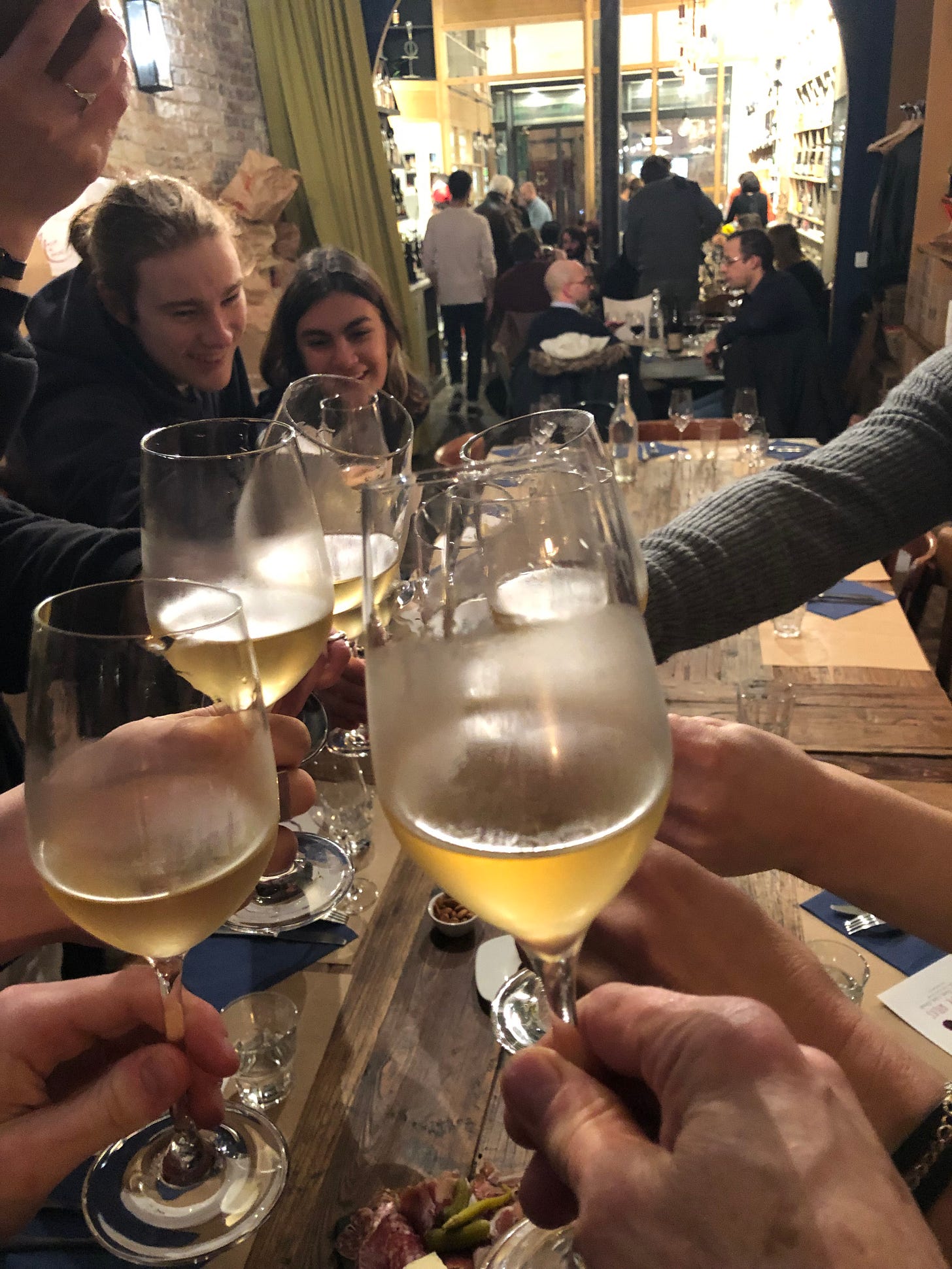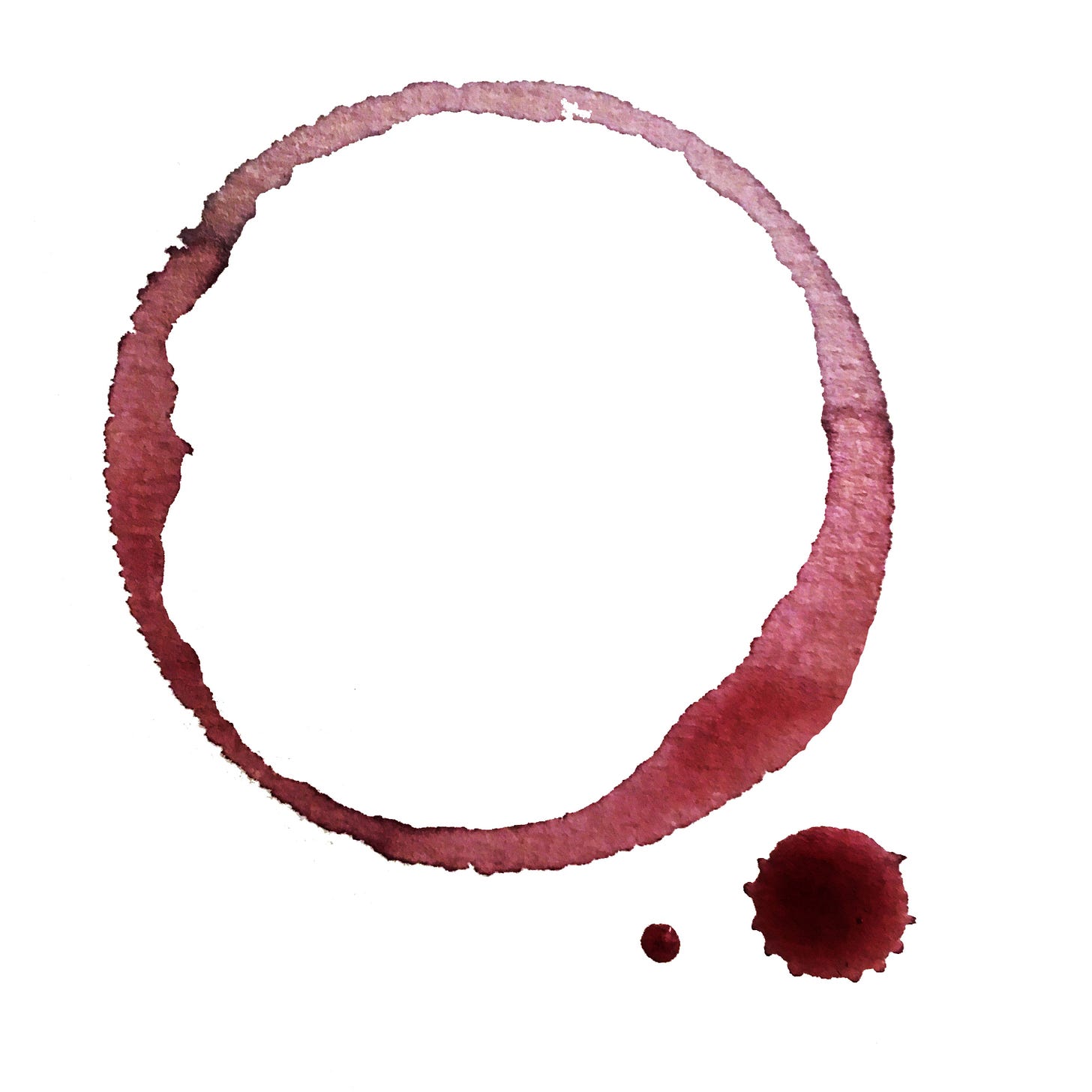Vines and trees will teach you that which you will never learn from masters.
We recently visited three of the six vineyards that comprise Les Vinots de Verdelot (‘vinot’ is a diminutive term for describing a vineyard plot) in the valley of Le Petit Morin, about 85kms to the east of Paris with Michel Bourqui, the former director of the Masters in Wine Management programme of the OIV (Organisation International de la Vigne et du Vin). Michel is now Co-President of the Syndicat des Vignerons des deux Morin.
We began our tour with a visit to the church in the village of Verdelot and the story of Philippe Verdelot, born Deslouges, whose home town some how came to identify him as well. Verdelot was a musician who spent most of his life in Italy.
He was a Renaissance composer who is generally accepted as being the father of the Italian Madrigal. There is a bas relief with the story of this prolific musician (note the vines) on a wall adjacent to the church and concerts and festivals in tribute to his compositions are held regularly in the church.
The renaissance of the commercial vineyards of the Île-de-France is a testimony to the notoriety, the history, and the perseverance of the wine growers in what was once the biggest vineyard region of the world. Les Vinots de Verdelot are another recent arrival on the commercial wine scene of the Île-de-France, but rather unique in their approach.
Some might think it fanciful to want to try to redeem a vineyard region that was once considered the best in France, particularly given the extent of urbanisation that has encroached upon it in some areas. Not to mention the fact that there is already an excess of wine produced in Europe. But the recognition that the soils of the region are perfectly suited to vines and the effects of climate change encouraging to achieving greater maturity, there is a growing number of wine makers betting on the future of the region. They are also aligning themselves with the ideology of ‘buying local’, trusting that their entire production will be happily consumed by Parisians.
In the commune of Verdelot, the dominant grape variety that has been planted is Verdelho, a homonym that seems almost too winsome to be taken seriously. Is this an earnest effort to align place with grape? An amusing coincidence, or a deliberate choice that has taken into account adaptability and how well aligned the grape is to soil and climate?
Verdelho is a white wine grape grown throughout Portugal, though most associated with the island of Madeira, and also gives its name to one of the four main types of Madeira wine. At the turn of the 20th century it was the most widely planted white grape in Madeira.
According to Michel Bourqui, the choice is both appropriate and poetic, as the Verdelho grape has very appealing qualities that are perfectly expressed through the soils of the Verdelot commune. He discovered Verdelho in Savennieres at the home of Evelyne de Pontbriand (Domaine du Closel) and adds, “this grape variety had been a candidate for the Anjou PDO along with Chenin blanc, which was selected. Chenin is the type of grape variety and wine that suited the conditions in our area. The Verdelho plantation was initially planned as a nod to the name of the village. But when I learned from a recent ampelographic study that Chenin and Verdelho were genetically descended from the same parent, Savagnin, I decided to experiment with pairing them in our plots, after checking the viability of the idea. The results of this pairing are good in terms of vegetative growth.”
“They are harvested together, so the blending is done directly in the press. After sharing the same nutrients, they are then vinified together in sandstone jars, plot by plot. Our ‘plot-by-plot approach’ is therefore integral, with grape varieties that live ‘in the family’.”
“All the Verdelot wines have the same grape variety. In 2026, we will be introducing Savagnin and Verdresse Blanche from the same genetic line.”
The Clos de Verdelot vineyard is part of a multi-farming unit that includes Vinot du Bois Clément (one of the 6 wines). The six winemakers are independent. Accordingly, they present themselves as Vignobles de Verdelot et Chai de la Vallée du Petit Morin and not Clos de Verdelot, which is known as a farm shop. The domain’s website tells us that “the Clos de Verdelot wine-growing renaissance project is expressed in the Vinot du Bois Clément”, the name given to the winery where the grapes from the various plots are brought together to make the wine. “The aim is to make the most of the historically favourable conditions in the Petit Morin Valley by replanting suitable grape varieties and implementing biodynamic practices.”
With IGP Île-de-France certification, the intention is to produce exceptional wines that reflect the unique identity of the region and will earn the Vallée du Petit Morin a Dénomination Géographique Particulière (DGC) within the IGP.
The grapes are vinified and aged in amphorae in the Chai de la Vallée du Petit Morin, located at the Hameau du Point du Jour.
The vineyard will also serve as an educational venue, raising visitors' awareness of biodiversity and the importance of sustainable practices, while contributing to the economic and cultural revitalisation of the area.
The Clos de Verdelot’s winemaking component, the Vinot Bois Clément, is currently being developed. It is one of the 6 Vinots de Verdelot that are ‘in society’. We saw 3 of them, two at Michel Bourqui’s property at La Croix Viornée and the ‘Vinot’ at Le Point du Jour, located in the Garden.
The association is grouped together under the legal status, SAS Chai de la Vallée du Petit Morin, with an associated CUMA (Cooperative for the Use of Agricultural Equipment).
For the time being, they are being very cautious, and therefore very discreet, when it comes to communicating about the Verdelot ‘vinots’, which are not yet in production and represent a very special, if not marginal, approach. The amphora tap that Michel opened for us to taste (still ‘under seal’) revealed a wine that was spirited, harmonious, with bright acidity, white floral notes and delicious fruit.
Le Point du Jour Garden
The Hameau Le Point du Jour was originally a dairy and cereal farm, but since 1980 it has evolved into one of the most original and creative gardens of France, thanks to the imagination, hard work and care of its owners Mr and Mrs Bougnoux.
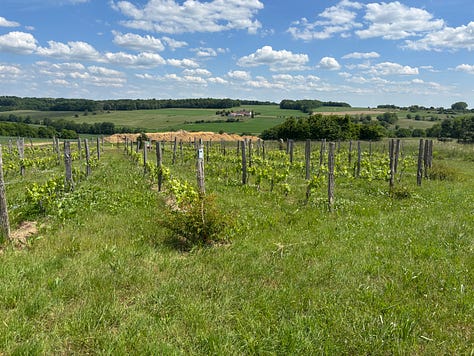
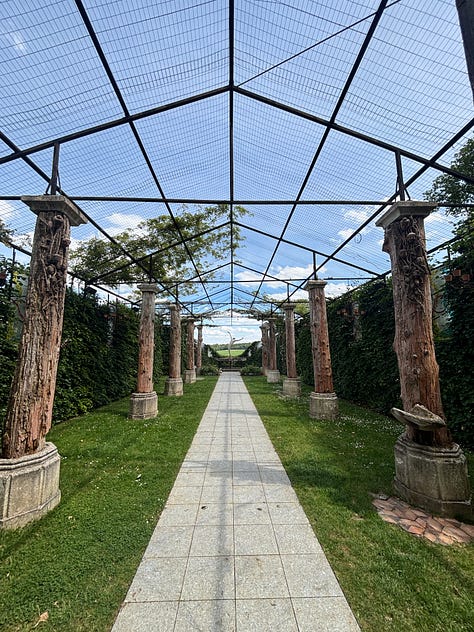
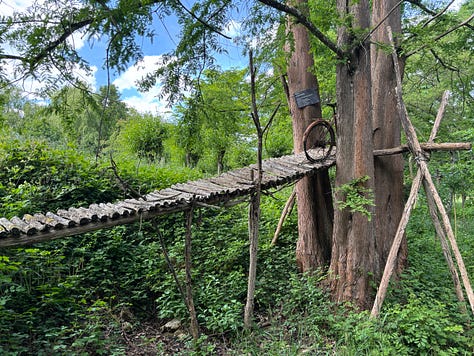

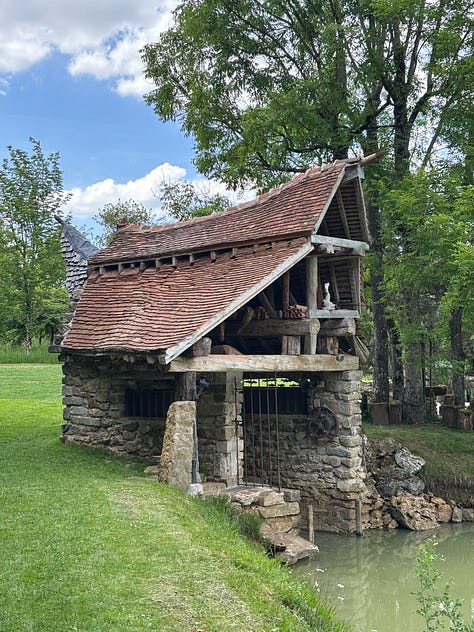
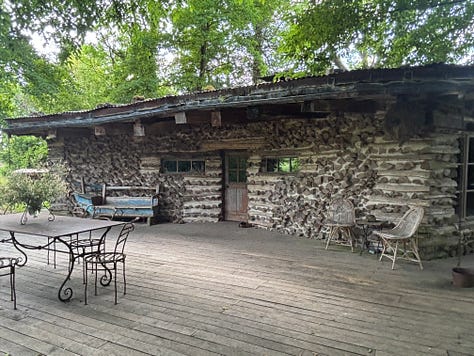
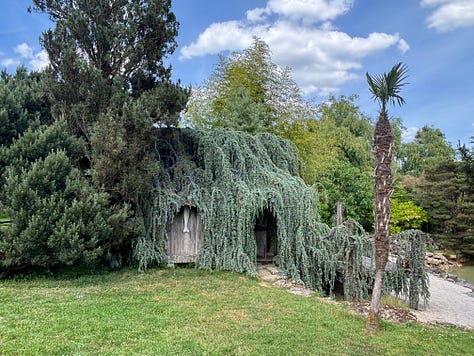
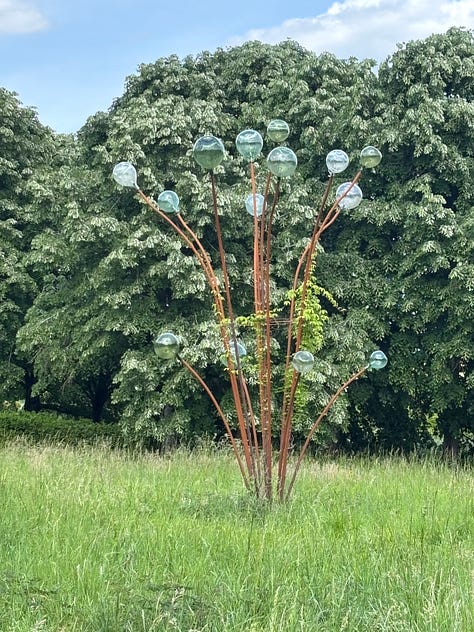
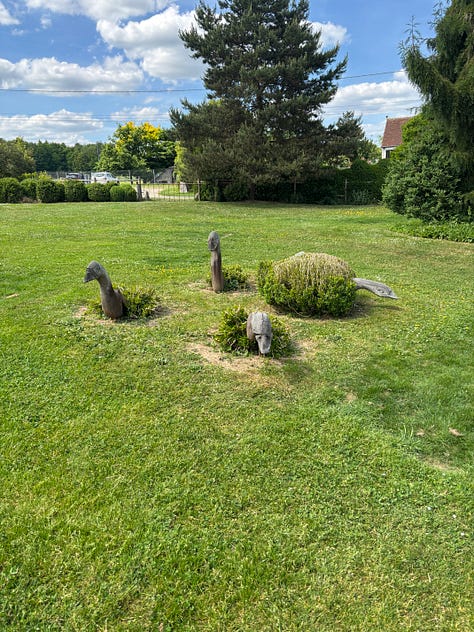
Covering an area of 7 hectares, it offers visitors lovely views over the surrounding hedged farmland, and along the way they can discover an old-fashioned greenhouse, a kiosk, a dovecote, huts, arenas, and even an artificial beach. There is an abundance of vegetation, including ornamental species as well as plants that grow spontaneously in the garden, all enhanced by artistic works and unusual objects.
The pastoral beauty of the region and the promise of this unique wine adventure is both encouraging and inspiring. We look forward to following the evolution of this innovative and collaborative vinous endeavour and to a return visit. Santé!
Thank you for letting me into your world and for reading the Paris Wine Walks Substack. Your support is invaluable as are your comments, suggestions, critiques, dreams, thoughts and remembrances. A little encouragement goes a long way, so please consider a paid subscription, which need cost no more than (a cheap) glass of wine per week. Or, book a wine walk!
My book, ‘The Hidden Vineyards of Paris’ (reviewed in Jancis Robinson’s wine blog, the Wine Economist, National Geographic Traveler UK, UK Telegraph) is available for purchase via our website and at anglophone bookshops and wine shops in Paris. You can also find it at the Musée de Montmartre and the Librairie Gourmande.
Wine Walks & Tastings!
Medieval & Roman Paris
Notre Dame, the Roman Baths, Hôtel Cluny, La Sorbonne, the Pantheon, the Roman Arena… history comes alive, conviviality shines, fun guaranteed, without the wine (or just one glass)
Clos Montmartre - Paris in Your Glass
Paris' most famous wine producing vineyard
Latin Quarter Unbottled!
An insider's journey to the oldest wine neighbourhood in the city
Wine Your Way Through the Marais
The Marais seen through a wineglass
Saint-Germain-des-Prés
Discover the vinous spirit of medieval Paris
3-Vineyard Cycling Tour
A comprehensive overview of medieval Paris by bike
Paris Bottled!
Short on time? This one’s for you

